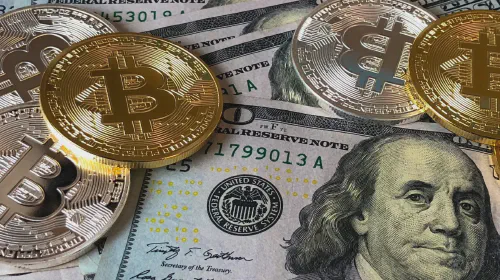Polkadot: Decentralized Web Protocol and Advanced Features Explained
Salomon Kisters
Aug 15, 2022This post may contain affiliate links. If you use these links to buy something we may earn a commission. Thanks!
Polkadot is a decentralized web protocol, open-source blockchain, and cryptocurrency developed by Gavin Wood, co-founder of Ethereum and inventor of the Solidity smart contract language. It was designed to be more developed than Ethereum while retaining its interoperability with other blockchains.
The platform’s genesis block was launched during 2020 (10 million tokens), followed by several parachains that will eventually ramp up to 100. The DOT token is the native currency for Polkadot and is used to facilitate network governance and staking operations.
In this article, we’ll look at how Polkadot and DOT function, how their interconnected nature and their blockchain community make them an attractive option for developers, and what’s so special about them.
Let’s dive right in!
What is Polkadot?
The Polkadot network is one of the largest projects ever funded by investors in the history of crypto and blockchains. It was founded by none other than Gavin Wood, the co-founder of Ethereum and the developer of the Solidity programming language. He is the former CTO of the Ethereum Foundation and is now the CEO of Parity Technologies. Peter Czaban and Robert Habermeier are two Thiel Fellows who are also actively involved in Polkadot development.
Polkadot works with public and private key cryptography to ensure maximum security. The recipient address is a hash of the public key. The private key is used to authorize transactions on the network. Every six seconds, pending transactions are confirmed in blocks of transactions, which form the Polkadot blockchain.
The Polkadot network has user-driven governance, which means that all token holders have a vote in how the network is run. Users can also customize the governance on the blockchain by forming teams and requesting it. Council members make decisions on how to improve the system, including eradicating bad behavior and ensuring security.
In 2021, the network held its first parachain auction. The auctions used a decentralized, unpermissioned candle auction system. The winning bid is the highest bid at random moments of the auction’s end.
How was Polkadot Formed?
Polkadot was initially formed as a decentralized proof-of-authority blockchain. As a next-generation network, it promotes a scalable, heterogeneous multi-chain framework that enables diverse blockchains to pool their security and share common features.
The DOT token powers the Polkadot network. As the native coin, it regulates all network operations, including voting, validating rights, and interoperability. DOTs are used for transactions and to fund protocol updates. Nominators bond DOTs to dedicated validators, which raises the cost of attacks and allows DOT holders to earn newly minted tokens as staking rewards.
Gavin Wood started developing his idea for a more efficient version of Ethereum in mid-2016. By October of that same year, he had released the first draft of the Polkadot whitepaper. Wood and other founders of Parity Technologies were the main contributors to the whitepaper.
The developers of Polkadot were drawn to the concept of the polka dot pattern. In both the fabric and crypto worlds, polka dots represent a pattern of large filled circles. In addition to that, the Polkadot network has close ties to Ethereum. After launching the ICO, it continued to develop the project. Eventually, it reached a Beta state, and the network-enabled token transferred in August 2020.
The Polkadot blockchain runs two types of networks. The main network is made up of the relay chain, while user-created networks are called parachains. The main blockchain serves as the master of the network and feeds data into the various parachains.
This design allows for secure transactions between chains while enabling users to customize their parachains for any number of uses. Both the parachain and the relay chain are capable of forming tokens.
What is So Special about Polkadot?
A decentralized blockchain is a type of distributed ledger. There are three types of blockchains: public, private, and hybrid. They all have the same functionality, but they work differently.
Polkadot is an ecosystem of decentralized blockchains. First, Polkadot aims to resolve the communication issue between blockchains. It also wants to promote the development of new technology on top of its network. To do so, it has built a scalability system and provides security and interoperability. And while most blockchains have their own benefits, Polkadot aims to solve some of the problems that are common to them.
Another feature that makes Polkadot unique is the ability to conduct upgrades within the chain. This feature prevents the risks associated with hard forks for major updates. This means that there is less risk of community splitting, token volatility, and administrative cleanup. Additionally, it allows parachains to be developed, allowing for faster transactions. This is a major plus for Polkadot.
The DOT token is a unique way for users to influence the development of the Polkadot. It allows holders to vote on code changes, and these changes will automatically upgrade across the entire network. Polkadot’s mainnet launched in May 2020, and since then, the project has attracted considerable attention from cryptocurrency traders, developers, and investors. The token is available on popular cryptocurrency exchange platforms and is traded on nearly 100 lesser-established platforms.
Polkadot’s Native Token, the DOT
So, what is it about the DOT that makes it so attractive?
The DOT is currently the tenth-largest cryptocurrency by market cap. The DOT has a number of distinct roles within the Polkadot network. Its holders control auction dynamics, determine network fees, schedule new parachains, and make decisions about network upgrades.
The platform’s ability to build blockchain networks quickly has attracted interest from investors and developers. In addition to facilitating the consensus mechanism in Polkadot, the DOT is also important in fostering its security model.
To keep the platform functioning smoothly, the DOT holders must actively participate. The holders stake their DOT in exchange for participating in various Polkadot functions. Staking is a method used to discourage malicious actions within the Polkadot network. Moreover, the amount of DOT staked in the network depends on the activity involved and its duration.
How Polkadot Works
If you’re wondering how Polkadot works, this section covers all of the basics, including the subchain, nominated proof-of-stake, and parachain architectures. It’s also worth reviewing the subchain’s dependencies, including Substrate, which is a library for building parachains and relay chains.
Parachains
Polkadot parachains are modular frameworks that support building applications within a blockchain. These frameworks enable developers to increase flexibility and optimization in the development process. Various components, such as transaction fees, data storage, speed, and pallets, are fully customizable.
The flexibility of the parachains is an advantage for early stage networks. This allows developers to focus on their core competencies and avoid building an entire network for every use case.
The parachains in the Polkadot network connect to a central relay chain that maintains consensus, transaction finality, and voting logic. In addition, each parachain has a collator node to collect transactions and produce state transition proofs. The cross-chain message passing system enables communication and asset transfer among parachains.
Nominated Proof-of-Stake
Nominated Proof-of-Stake is a decentralized consensus mechanism that rewards participants who support and nominate validators. Its basic design principles prioritize security, efficiency, and user satisfaction. In addition, participants can become nominators and validators by staking DOT tokens. Each block rewards the validators and nominators pro-rata.
The consensus algorithm used by Polkadot is based on nominated proof of stake. This process is extremely fast, resulting in lower transaction fees and a lower carbon footprint than other Proof-of-Stake protocols. The main blockchain runs on a relay chain, which allows for lightning-fast transaction processing.
Substrate
If you haven’t heard of Substrate, then you’re missing out on one of the most revolutionary technologies in cryptocurrency today. Thanks to the Substrate blockchain framework, you can create new blockchains and add them to your project in no time at all.
A Substrate project is an application that can be deployed on the Polkadot ecosystem. With the growing network, Substrate projects can be adopted by a broader audience. They also work with any desktop device or browser.
The technology behind Substrate is based on Rust and uses advanced Rust technologies in its code. This is particularly advantageous for developers since they can focus on the business logic and not the underlying programming language.
Polkadot’s Vision for the Future
The decentralized internet is the ultimate goal for Polkadot. The blockchain project’s vision is to create a system where no central authority controls the internet. Its founders hope to accomplish this by rewarding users for securing the network and bonding new chains.
Polkadot has several Block Explorers, analytics, a wiki, tons of blogs and social channels, and a software development kit. It also hosts Github and third-party staking metrics sites. It built a robust community around its Substrate blockchain, which is quickly being adopted by other projects. In addition to the underlying blockchain, other projects are also adopting the Polkadot Substrate, making it easier for them to interact with one another.
In addition to a blockchain-based network, Polkadot is developing a governance system to govern its platform. The on-chain governance system allows the community to make decisions, such as creating policies, allowing community members to participate in decisions, and enacting changes.
Ultimately, Polkadot wants to create a decentralized platform that empowers users by empowering them. Its future development is dependent on the community and the on-chain governance syste
Stay informed with the latest insights in Crypto, Blockchain, and Cyber-Security! Subscribe to our newsletter now to receive exclusive updates, expert analyses, and current developments directly to your inbox. Don't miss the opportunity to expand your knowledge and stay up-to-date.
Love what you're reading? Subscribe for top stories in Crypto, Blockchain, and Cyber-Security. Stay informed with exclusive updates.
Please note that the Content may have been generated with the Help of AI. The editorial content of OriginStamp AG does not constitute a recommendation for investment or purchase advice. In principle, an investment can also lead to a total loss. Therefore, please seek advice before making an investment decision.

What Are Algorithmic Stablecoins?
Algorithmic stablecoins are backed by an on-chain protocol that pegs their value to a supply/demand ratio maintained by an algorithm. Let's have a closer look.

What Is Tron? A Guide to the Decentralized Blockchain Platform
Tron is a decentralized blockchain platform designed to promote content and entertainment. It uses a delegated Proof-of-Stake consensus and has grown in popularity since its launch in 2018.

What Is XRP and Who Uses It?
Not many cryptocurrencies have spent as many years on the top ten list of the largest crypto projects as XRP. This article will cover everything you need to know about XRP and who uses it.
Protect your documents
Your gateway to unforgeable data. Imprint the authenticity of your information with our blockchain timestamp